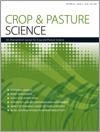Annual ryegrass (Lolium rigidum Gaud.) is a troublesome invasive plant in southern Australian cropping systems and is typically infected with a fungal endophyte, Epichloë occultans. Potential links between herbicide resistance and endophyte infection were investigated in this study. We surveyed 391 ryegrass populations from geographically distinct, naturalised pasture and cropping areas across southern Australia and compared frequencies of seed-borne endophyte infection in the collected seed samples from mature annual ryegrass. Data on herbicide resistance from similar seedlots were cross-referenced with endophyte infection frequency to examine the potential relationship between herbicide resistance and endophyte infection. Seeds from cropping paddocks exhibited a significantly higher frequency of endophyte infection than pasture paddocks sampled from the same region. Frequencies of endophyte infection in annual ryegrass declined across Australia during 2001–09, whereas the opposite trend was observed during 2009–12. Impacts of the Australian Millennium Drought, the correspondingly altered rainfall patterns and environmental selection pressures have a role in determining observed endophyte infection frequencies. However, there was no significant correlation between endophyte frequency and herbicide resistance in the populations evaluated. Differences in endophyte infection frequencies were associated with farming practices, and require further examination to determine causative selection pressures encountered in Australian field settings.
How to translate text using browser tools
1 June 2018
Epichloë occultans infection in Australian Lolium rigidum is associated with cropping history and environment but not with herbicide resistance status of host plant
Joseph R. Moore,
James E. Pratley,
Leslie A. Weston,
Wade J. Mace,
John C. Broster,
Karen A. Kirkby
ACCESS THE FULL ARTICLE
<
Previous Article
|

Crop and Pasture Science
Vol. 69 • No. 6
June 2018
Vol. 69 • No. 6
June 2018
bioprotective
endophyte succession
endosymbiont
Neotyphodium





